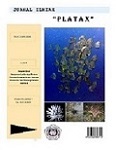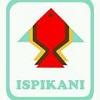Community Structure of Hard Coral (Scleractinia) in the Walenekoko Reef Flat, Pasir Panjang, Bitung City
DOI:
https://doi.org/10.35800/jip.v10i1.37277Keywords:
Community Structure, Hard Coral, Reef Flat,Abstract
Coral reefs are one of the potential good water resources in Indonesian marine waters. Ecologically, coral reefs can only develop in tropical climates. Hard coral is one of the important components as a constituent of coral reef ecosystems and plays an important role for marine biota. The research was conducted at the reef flat of Walenekoko Village, Pasir Panjang Village, South Lembeh District, Bitung City. The research covers the species, family and life form composition, and ecological indices (diversity, species equitability, and dominance indices). The research was carried out with an Underwater Photo Transect (UPT) method. The results obtained 18 types of hard corals belonging to 5 families. Montipora samarensis was the most abundant coral in the area with 43% of the community composition. The Faviidae family and Acroporidae (33%) had the largest percentage in all transects. The form of coral growth consisted of Acropora Submassive (ACS) 53%, Coral Massive (CM) 30%, and for Acropora Branching (ACB) 16%. The highest diversity value is at point 3 of 1.64, and point 1 of 1.60, while the lowest is at point 2 of 0.56. The evenness index obtained at point 1 is 0.70, and at point 2 is 0.30. The dominance values obtained ranged from 0.25 to 0.52.
Keywords: Community Structure; Hard Coral; Reef Flat
Abstrak
Terumbu karang merupakan salah satu potensi sumberdaya perairan yang baik di perairan laut Indonesia. Secara ekologis terumbu karang hanya dapat berkembang di wilayah beriklim tropis. Karang keras merupakan salah satu komponen penting sebagai penyusun ekosistem terumbu karang dan berperan penting bagi biota laut. Penelitian ini dilakukan di rataan terumbu Desa Walenekoko, Desa Pasir Panjang, Kecamatan Lembeh Selatan, Kota Bitung. Penelitian meliputi komposisi spesies, famili, dan bentuk kehidupan, serta indeks ekologi (keanekaragaman, keseragaman spesies, dan indeks dominasi). Penelitian dilakukan dengan metode Underwater Photo Transect (UPT). Hasil penelitian diperoleh 18 jenis karang keras yang termasuk dalam 5 famili. Montipora samarensis adalah spesies yang paling banyak ditemukan di daerah tersebut dengan persentase 43%. Famili Faviidae dan Acroporidae (33%) memiliki persentase terbesar di semua transek. Bentuk pertumbuhan karang terdiri dari: Acropora Submassive (ACS) 53%, Coral Massive (CM) 30%, dan untuk Acropora Branching (ACB) 16%. Nilai keanekaragaman tertinggi yaitu pada titik 3 sebesar 1,64, dan titik 1 sebesar 1.60, sedangkan yang termasuk rendah yaitu pada titik 2 sebesar 0,56. Indeks kemerataan diperoleh pada titik 1 sebesar 0,70, dan pada titik 2 sebesar 0.30. Nilai dominasi diperoleh berkisar antara 0.25 hingga 0.52.
Kata kunci: Struktur Komunitas; Karang Keras; Rataan Terumbu.
References
Antou, K., Rondonuwu, A., & Moningkey, R. (2019). Survival Rate and Growth of Acropora sp. Transplanted on Artificial Substrate in Kampung Ambong, Likupang Timur. Jurnal Ilmiah PLATAX, 7(1), 170-177. doi:https://doi.org/10.35800/jip.7.1.2019.22652
Bachtiar, I., Karnan, I.I.A Hakim., L. Japa, E. Pradjoko & Syafruddin (2016). Kajian potensi dampak pembangunan danau di distrik the Lagoon terhadap komunitas cacing nyale di Mandalika.
Barus B. S., Prartono T., Soedarma D., (2018). Environmental effect of coral reefs life form in the Lampung Bay. Jurnal Ilmu dan Teknologi Kelautan Tropis 10(3):699-709.
Barus, B.S. (2013). Keterkaitan Sedimentasi Terhadap Kondisi Ekosistem Terumbu Karang di Perairan Teluk Lampung Provinsi Lampung. Tesis. Institut Pertanian Bogor.
Brown, B. E., Holley, M. C., Sya’rani, L. & Tissier, L. M. (1983). Coral assemblages of reef flats around PulauPari, Thousand Islands, Indonesia. Atoll Research Bulletin, 281: 1-13.
Giyanto (2013). Metode transek foto bawah air untuk penilaian kondisi terumbu karang. Oseanologi dan Limnologi di Indonesia, 38 (1): 47-61.
Kambey, A. (2014). The Growth of Hard Coral (Acropora sp.) Transplants in Coral Reef of Malalayang Waters, North Sulawesi, Indonesia. Jurnal Ilmiah PLATAX, 1(4), 196 - 203. doi:https://doi.org/10.35800/jip.1.4.2013.3703
Krebs, (2014). Ecological Methodology (Fourth Edition). Ecology at the University of Canberra and the Biodiversity Center at the University of British Columbia. Canberra.
Krebs, C.J. (1989). Ecological Methodology. Harper Collins Publishers. New York. 654 hal.
Lalamentik, L., Rembet, U., & Wantasen, A. (2017). Reef Fishes Colonization Rate Around Artificial Reef in Putus-putus Island, South-East Minahasa District. Jurnal Ilmiah PLATAX, 5(1), 21-33. doi:https://doi.org/10.35800/jip.5.1.2017.14969
Latuconsina H. (2016). Ekologi Perairan Tropis. Gajah Mada University Press, Yogyakarta.
Luthfi, M. O. (2003). Sebaran Spasial Karang Keras (Scleractinia) di Perairan Pulau Panjang, Jepara. Skripsi. Jurusan Ilmu Kelautan. Fakultas Perikanan dan Ilmu Kelautan, Universitas Diponegoro. Semarang.
Luthfi, O. M., & Anugrah, P. T. (2017). Distribution of Scleractinian coral as the main reef building of coral reef ecosytem in Karang Pakiman’s patch reef, Bawean Island. Depik Jurnal Ilmu-Ilmu Perairan, Pesisir dan Perikanan, 6(1), 9-22.
Luthfi, O. M., Rendy V. W., (2018). Keanekaragaman Karang Keras dan Ikan Terumbu Di Pantai Papuma Jember, Jawa Timur, Jurnal Biologi
Udayana, Vol 22.
Muhlis (2011). Ekosistem terumbu karang dan kondisi oseanografi perairan Kawasan Wisata Bahari Lombok. Berkala Penelitian Hayati (Jounal of Biological Researches), 16 (2): 111-118.
Odum, E. P. (1993). Dasar-dasar Ekologi. Jakarta: PT. Gramedia. (Terjemahan).
Reid, C., Justin Marshall, Dave Logan and Diana Klepareidine. Terumbu Karang dan Perubahan Iklim. Coral Watch, The University of Queensland. Australia. 256 pages.
Rembet, U. (2012). Simbiosis Zooxanthellae dan Karang Sebagai Indikator Kualitas Ekosistem Terumbu Karang. Jurnal Ilmiah PLATAX, 1(1), 37-44. doi:https://doi.org/10.35800/jip.1.1.2012.502
Rondonuwu, A., Rembet, U., Moningkey, R., Tombokan, J., Kambey, A., & Wantasen, A. (2014). Coral Fishes the Famili Chaetodontidae in Coral Reef Waters of Para Island Sub District Tatoareng, Sangihe Kepulauan Regency. Jurnal Ilmiah PLATAX, 1(4), 210-215. doi:https://doi.org/10.35800/jip.1.4.2013.3705
Suharsono, (2008). Jenis-jenis Karang di Indonesia. Pusat Penelitian dan Pengembangan Oseanografi,-LIPI. Jakarta.
Tianran, C., Kefu, Y. U., Qi, S. H. I., Shu, L. I., Price, G. J., Rong, W., Meixia, Z., Tegu, C. Jianxin, Z. (2009). Twenty-five years of change in scleractinian coral communities of Daya Bay (northern South China Sea) and its response to the 2008 AD extreme cold climate event. Chinese Science Bulletin, 54: 2107-2117.
Veron J.E.N., Stafford-Smith M. (2000) Corals of the world. Volume 1. Australian Institute of Marine Sciences, Australia, 463 pp.
Wolstenholme, J., Dinesen, D. Z. & Alderslade, P. (1997). Hard corals of the Darwin Region, Northern Territory, Australia. Proceedings of the Sixth International.
Downloads
Published
How to Cite
Issue
Section
License
COPYRIGHT
Authors who publish with this journal agree to the following terms:
Authors hold their copyright and grant this journal the privilege of first publication, with the work simultaneously licensed under a Creative Commons Attribution License that permits others to impart the work with an acknowledgment of the work's origin and initial publication by this journal.
Authors can enter into separate or additional contractual arrangements for the non-exclusive distribution of the journal's published version of the work (for example, post it to an institutional repository or publish it in a book), with an acknowledgment of its underlying publication in this journal.
Authors are permitted and encouraged to post their work online (for example, in institutional repositories or on their website) as it can lead to productive exchanges, as well as earlier and greater citation of the published work (See The Effect of Open Access).


















